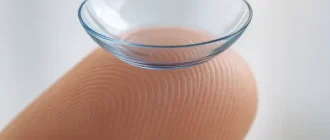Astigmatism is a disorder that alters the shape of the cornea, and one of the most prevalent symptoms is blurred vision. Astigmatism is often treated with glasses or surgery, although there are a variety of non-invasive methods that may be effective in alleviating the condition’s symptoms. Several non-surgical treatments for astigmatism will be discussed in this article.

- Wear Corrective Lenses: The most common approach of correcting astigmatism is through wearing specially fitted lenses. The corneal curvature is adjusted by these lenses, which aids in proper light focusing on the retina. Both optometrists and ophthalmologists may recommend these corrective lenses, which come in a broad range of designs. You may choose from a wide variety of frames, lenses, and other eyewear accessories, including glasses, contacts, and even some bizarre options for use at night.
- Use Eye Exercises: Eye exercises can help to strengthen the eye muscles, which can help to reduce the symptoms of astigmatism. These exercises can include focusing on a distant object, blinking rapidly, and rolling the eyes in a circular motion.
- Eat a Healthy Diet: Eating a healthy diet can help to improve overall eye health, which can help to reduce the symptoms of astigmatism. Foods that are rich in vitamins A, C, and E, as well as omega-3 fatty acids, can help to improve vision.
- Reduce Stress: Stress can have a negative effect on vision, so it is important to reduce stress levels as much as possible. This can be done by engaging in relaxation techniques, and deep breathing.
- Wear Sunglasses: Wearing sunglasses can help to reduce the amount of UV light that enters the eyes, which can help to reduce the symptoms of astigmatism.
By following these tips, you can help to reduce the symptoms of astigmatism without having to resort to surgery. However, if the condition persists, it is important to consult with an optometrist or ophthalmologist to determine the best course of treatment.





